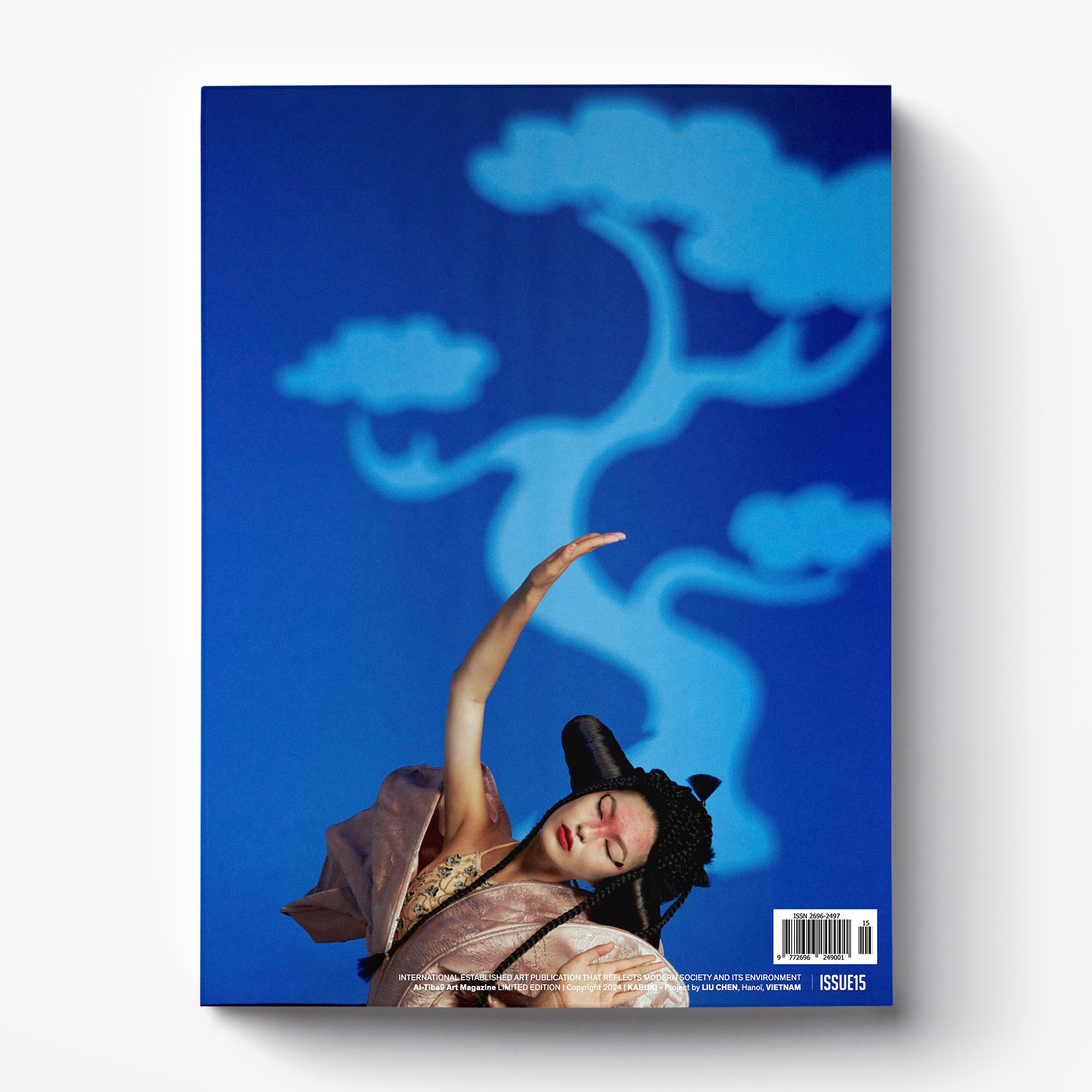10 Questions with Stefano Scarafia
Stefano Scarafia, born in 1978, holds a degree in architecture and has been involved in visual arts for over 15 years. As a filmmaker by profession, he embarked on a personal journey of exploring abstract collage, created entirely by hand. His works have been exhibited and awarded in collective exhibitions both in Italy and abroad.
Stefano Scarafia - Portrait
ARTIST STATEMENT
“The figurative representation of reality fragments, dissolves, and fades until it disappears. I believe this is the stylistic hallmark of my collages. The images take on the form of geometries, simple subjective mental suggestions, pure imagination, and pieces of fantasies.
The technique of collage is inherently tied to reuse, reconstruction, and personal reinterpretation. In my case, it grapples with a reality that is difficult to grasp. This expressive form, simple and open, transports me back to childhood—a time when there wasn’t too much need to establish a definite sense of things; instead, one can simply let go and experiment.
Now, for me, these visually silent surfaces allow the rhythm of my gaze to slow down and wander, almost becoming dreamlike. They’ve become a way for me to freely immerse myself in empty and abstract spaces where one can lose oneself.
My collages are assemblages of remnants, attempting to forge an emotional connection with the observer. They challenge their perception of reality, offering a moment of disorientation—an opportunity to let go, freeing oneself from the obligation to piece things together or interpret them.
Fundamentally, in these artworks, I’m not seeking a truth or a specific meaning. It’s akin to being immersed in fog, where the contours of the landscape are glimpsed and intuited, aware of the existence of a reality that is present but cannot be fully grasped or imagined. And perhaps, therein lies the beauty.” — Stefano Scarafia
Fog of Images, collage, 2023 © Stefano Scarafia
AL-TIBA9 ART MAGAZINE ORIGINAL ISSUE15
INTERVIEW
First, let's talk a little bit about yourself. Your background is in Architecture, yet you've chosen to express your artistic vision through abstract collage. How does your architectural background influence your approach to creating these handcrafted collages?
I am a graduate of architecture, and for twenty years, I have been involved in various professional capacities related to communication, graphic design, and video. I believe my studies have gradually shaped my perspective and aesthetic sensibilities. They have also helped me build a visual framework, emphasizing composition, color usage, and the pursuit of simplicity and empty spaces.
You also work as a filmmaker. How do you find the intersection between the moving image and the static nature of abstract collage? Does one medium influence the other in your creative process?
If there is a common element between these two ways of expressing myself, in my case, I think it is the approach to imagery, which is similar in both instances. When I shoot footage or create collages, I recognize my inclination to have a geometric, and melancholic gaze. In my documentaries, the camera is often fixed on a tripod, and the characters move within the frame, much like in a painting. As a director, I create many documentaries where I grapple with a faithful representation of reality. The situations must be conveyed truthfully, and the characters are individuals interpreting themselves. For this reason, in my collages, I enjoy distancing myself as much as possible from the plausible, instead delving into the realm of imagination and exploring pure abstract suggestion. In a way, I believe these two modes of expression complement each other, serving as counterpoints. In this sense, they influence each other.
Fog of Images, collage, 2023 © Stefano Scarafia
Fog of Images, collage, 2023 © Stefano Scarafia
What draws you to the medium of collage, and why do you choose to create your pieces entirely by hand rather than digitally?
I deal with digital images all day for work—videos, photographs, graphics. When it comes to collages, I have absolutely no interest in using digital tools or computers. Collage is a technique that originates from manual, raw, artisanal processes—a direct interaction with the material. This is what I appreciate and find essential to preserve. Craftsmanship is sacred in this expressive form, at least for me. If you glue a piece of paper onto a canvas and realize it doesn't work or you don't like it, you can't simply hit CTRL Z (as you would on a computer) to undo it and start over in a fraction of a second... this seems much riskier and more exciting. Moreover, creating something by hand involves significantly different, longer, and more contemplative timeframes (but that's just my perspective).
Can you walk us through your creative process when crafting your abstract collages? How do you decide on the arrangement of geometric forms and the overall composition of your pieces?
What interests me is the concept of "painterly collage," where the image is formed by layering strips of paper, which are used like brushstrokes. In this way, I create backgrounds that appear painted but are actually made of pieces of paper glued next to each other. They are not perfectly homogeneous but contain nuances, layers of color, transparencies, pieces of phrases, or letters. This way, the image gradually emerges, and I have the feeling that it contains something dreamlike. Over time, my style has become increasingly synthetic and essential. I have tried to work on subtraction, even in the use of colors (usually no more than two or three per painting), eliminating everything that was unnecessary and focusing on surfaces that contain few signs, suggesting visually silent spaces. From a distance, the composition appears as a simple geometric arrangement of squares or rectangles. However, when you get closer, the eye gets completely lost in the overlap of hundreds and hundreds of fragments placed one on top of the other. At that point, I think the geometry becomes more fluid and disappears, allowing the gaze to wander freely, to search among the details of cutouts and find its own path, creating a captivating visual experience.
Fog of Images, collage, 2023 © Stefano Scarafia
Can you discuss the significance of working entirely by hand in your collage creations? How does the tactile nature of the process contribute to the overall aesthetic and message of your artwork?
My technique is closely related to recycling, recovery, and reconstruction. Essentially, my collages are assemblages of remnants. I work with pieces of paper salvaged from newspapers, books, and magazines, which I then glue onto wooden panels. These thousands of reclaimed paper fragments—crumpled, pre-printed, torn, folded, and distorted—already tell a story in themselves. They exude a flavor and atmosphere that other objects or computer-generated images simply lack. In my view, using paper and creating collages by hand is akin to shooting a film with 16mm with scratches and imperfections, an analog essence that cannot be replicated otherwise. Paper and wood, both humble and natural materials, possess their own unique scent and charm. We've all encountered them in some way or another, especially during childhood. I find them to be perfect tools for artworks that remain artisanal in the noblest sense of the term—traditional, handmade, meticulously detailed, and rooted in a warm aesthetic drawn from the past. This stands in stark contrast to the digital realm, where the experience differs significantly. It's akin to the difference between leafing through old family photo albums and scrolling through images in a computer folder.
On that note, can you discuss the role of geometry in your artwork? How do geometric forms contribute to your collages' visual language and atmosphere?
Geometric shapes provide order and regulation to the composition. When I create an image (even in my films), I always seek a certain symmetry and lines that dominate and structure the image. The paintings are executed with broad areas, almost monochromatic, which divide the collage into surfaces that contrast with each other and, in some cases, overlap slightly. This seemingly simple and rigid composition gains depth through chromatic nuances, thickness (resulting from greater or lesser layer overlap), shadows in the folds, subtle changes in tone of the cutouts. I believe this can convey emotional sensations, a mood, an atmosphere—more than representing an objective/figurative world.
Fog of Images, collage, 2023 © Stefano Scarafia
Fog of Images, collage, 2023 © Stefano Scarafia
Unlike figurative representation, your collages do not aim to convey specific meanings but instead offer glimpses of landscapes. How do you approach the balance between abstraction and representation in your work?
I'm not sure if there necessarily needs to be a balance between these two opposites. Abstraction is a genre of representation. As I mentioned earlier, what interests me is evoking emotion and strong sensations in the viewer. Perhaps the collages I create are glimpses of landscapes, but they are dreamlike landscapes—immersed in mist and born from imagination. I believe this can be engaging for the viewer, who is called upon to react and interpret. And they will do so through the filter of their personal sensitivity, thus establishing an intense relationship between the artwork and the observer.
As an artist, how do you personally engage with the landscapes you depict in your collages? Are they drawn from specific places, memories, or purely from your imagination?
The shapes I create are not landscapes drawn from real places; they are entirely imaginary. They emerge gradually, piece by piece, as I work. If I were to define them, I'd say they represent mental spaces—almost like non-places. These are desolate and melancholic landscapes stripped of explicit signs and details. They don't seek to reproduce or reinterpret a figurative reality. These surfaces are where one can lose oneself or search for something among the folds, overlaps, and transparencies.
Fog of Images, collage, 2023 © Stefano Scarafia
Do you plan to approach any new medium in the future? For example, have you ever considered digital collages or any other digital technique?
I have already explored various expressive mediums in my educational and professional journey, ranging from graphic design to video (which I still practice daily).
For me, collage represents a different approach to communication, and it will remain strictly manual. On the other hand, I was born in the late 1970s, a time when digital technology was nearly nonexistent, social media was science fiction, and AI was a distant concept.
When I cut and paste pieces of paper to create a composition, I find it genuinely refreshing, a momentary escape from the digital world
And lastly, what are you working on now? Do you have any new series or exhibitions coming up?
I am currently working on new collages stylistically aligned with those I have created so far, but I am focusing on size. I would like to create larger works, as I believe they would have a greater emotional impact. Additionally, I want to experiment with using new colors and exploring shades that are less neutral and more vibrant. Some of my collages are currently on display in Spain, specifically in Alicante, and they will later be exhibited in Granada. We'll see what opportunities arise in the coming months.
Artist’s Talk
Al-Tiba9 Interviews is a promotional platform for artists to articulate their vision and engage them with our diverse readership through a published art dialogue. The artists are interviewed by Mohamed Benhadj, the founder & curator of Al-Tiba9, to highlight their artistic careers and introduce them to the international contemporary art scene across our vast network of museums, galleries, art professionals, art dealers, collectors, and art lovers across the globe.
























